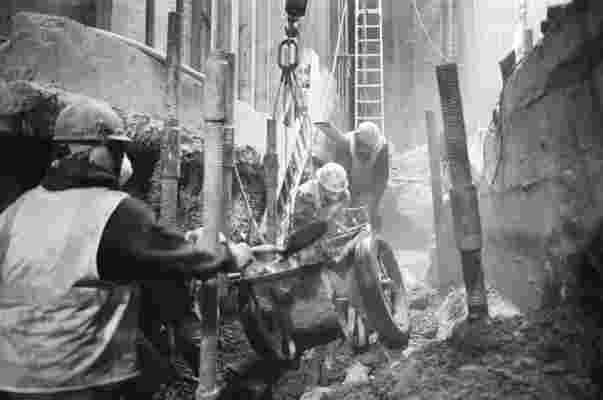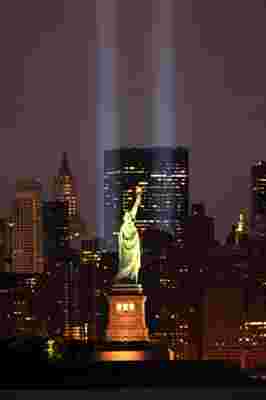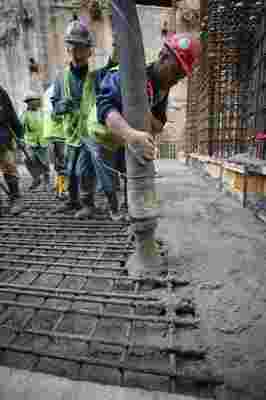When photographer Joe Woolhead first heard about the September 11 attacks, he rushed to downtown Manhattan with his camera. He photographed a cloud of smoke emerging from the Twin Towers while riding on a moving subway car, which was crossing a bridge before it zipped back underground. Over the next decade, he took over two million photographs of the site, from rubble to construction, and endearing portraits of the construction workers who built the One World Trade Center, which opened in 2014. Today it remains a symbol of strength, resilience, and hope.
Now a new book traces the photos and story that saw the tragedies unfold, leading up to the construction of the iconic building. Once More To The Sky: The Rebuilding of the World Trade Center is both a photo book and historical document that traces the path to building the One World Trade Center after 10 years of construction from 2005 to 2015. It released on August 31, coinciding with the 20th anniversary of the September 11 attacks.

Construction workers moving debris from the original World Trade Centers following the 9/11 attacks.
The $4 billion construction project was intimately documented by writer Scott Raab, who wrote a ten-part series for Esquire starting in 2005, and Woolhead, who became the official photographer for the World Trade Center to document its historic creation.
The book features never-before-seen photos of the skyscraper’s construction alongside portraits of engineers, boardroom meetings, and blueprints. It shows the growth of the epic project, starting from one of the first photos in the book, which depicts a dystopian cloud of smoke over piles of rubble, calling to mind an image from the Second World War.
“I was working at an unconscious level as I went day to day documenting the work that was going on,” Woolhead says. “I only really began to delve into the significance of the photos after a number of years had passed, and I realized there was a bigger picture I was capturing.”

The Statue of Liberty at night with the Tribute in Light—two beams of light symbolizing the fallen towers—in the background.
The book also features stories of people who helped build the building, as well as survivors and families of those who did not survive. “It has been a long, strange journey since 9/11,” Woolhead says. “Since I was involved with construction on a ground level, there were many delays, but it’s great to see the masterplan come together. I didn’t realize it would take so long.”

Construction begins on the new One World Trade Center, a skyscraper that would symbolically stretch to a height of 1,776 feet.
There are many intimate portraits of the workers who built the building ground up, and the book offers insight into their day-to-day work. “Being with the workers day in and day out, I felt like one of the crew,” Woolhead says. “It was great to document the work and they really appreciated it. They knew in the long run I was concentrating on the big picture, how the building was being built, and their work was going to be reflected in the photos I captured.”
The book also covers the untold story of the tower, its controversies, and delays. “So much was going on behind the scenes,” Raab says. “It’s not just about rebuilding the World Trade Center, but rebuilding anything of this magnitude, it’s negotiating a certain amount of political uncertainty. It’s why everything has taken so long.”
An aerial view of One World Trade Center (home to Condé Nast, the parent company of Architectural Digest ).
It’s part-reportage, part photo book. In its essence, it’s a story of hope. “Now, more than ever, there are moments in a country’s history that you feel turning points—or hope there may be a turning point,” Raab says. “But that only becomes reality if enough people pull together. It enables people to come back down to work and live.”
The book resonates with today too. “We’re seeing this with the pandemic, it’s uncertain, but how will it look, looking back?” he adds. “A communal, national effort to address something that feels like 9/11. It threatens us to the very heart of our national soul.”
